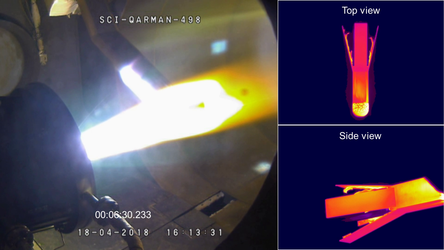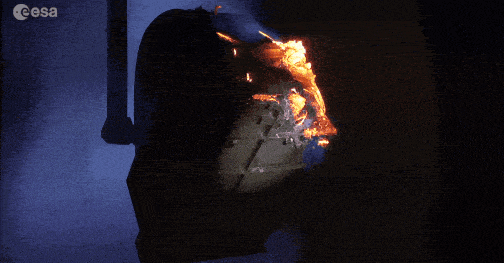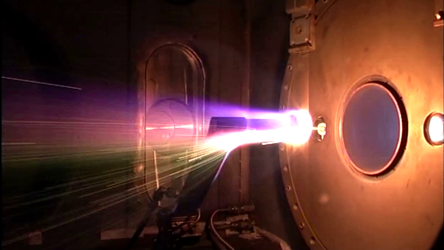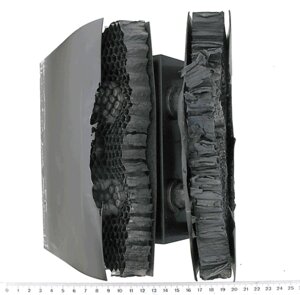Accept all cookies Accept only essential cookies See our Cookie Notice

About ESA
The European Space Agency (ESA) is Europe’s gateway to space. Its mission is to shape the development of Europe’s space capability and ensure that investment in space continues to deliver benefits to the citizens of Europe and the world.
Highlights
ESA - United space in Europe
This is ESA ESA facts Member States & Cooperating States Funding Director General Top management For Member State Delegations European vision European Space Policy ESA & EU Space Councils Responsibility & Sustainability Annual Report Calendar of meetings Corporate newsEstablishments & sites
ESA Headquarters ESA ESTEC ESA ESOC ESA ESRIN ESA EAC ESA ESAC Europe's Spaceport ESA ESEC ESA ECSAT Brussels Office Washington OfficeWorking with ESA
Business with ESA ESA Commercialisation Gateway Law at ESA Careers Cyber resilience at ESA IT at ESA Newsroom Partnerships Merchandising Licence Education Open Space Innovation Platform Integrity and Reporting Administrative Tribunal Health and SafetyMore about ESA
History ESA Historical Archives Exhibitions Publications Art & Culture ESA Merchandise Kids Diversity ESA Brand Centre ESA ChampionsLatest
Space in Member States
Find out more about space activities in our 23 Member States, and understand how ESA works together with their national agencies, institutions and organisations.
Science & Exploration
Exploring our Solar System and unlocking the secrets of the Universe
Go to topicAstronauts
Missions
Juice Euclid Webb Solar Orbiter BepiColombo Gaia ExoMars Cheops Exoplanet missions More missionsActivities
International Space Station Orion service module Gateway Concordia Caves & Pangaea BenefitsLatest
Space Safety
Protecting life and infrastructure on Earth and in orbit
Go to topicAsteroids
Asteroids and Planetary Defence Asteroid danger explained Flyeye telescope: asteroid detection Hera mission: asteroid deflection Near-Earth Object Coordination CentreSpace junk
About space debris Space debris by the numbers Space Environment Report In space refuelling, refurbishing and removingSafety from space
Clean Space ecodesign Zero Debris Technologies Space for Earth Supporting Sustainable DevelopmentLatest
Applications
Using space to benefit citizens and meet future challenges on Earth
Go to topicObserving the Earth
Observing the Earth Future EO Copernicus Meteorology Space for our climate Satellite missionsCommercialisation
ESA Commercialisation Gateway Open Space Innovation Platform Business Incubation ESA Space SolutionsLatest
Enabling & Support
Making space accessible and developing the technologies for the future
Go to topicBuilding missions
Space Engineering and Technology Test centre Laboratories Concurrent Design Facility Preparing for the future Shaping the Future Discovery and Preparation Advanced Concepts TeamSpace transportation
Space Transportation Ariane Vega Space Rider Future space transportation Boost! Europe's Spaceport Launches from Europe's Spaceport from 2012Latest

Drive to destruction
Thank you for liking
You have already liked this page, you can only like it once!
Simulating the burn-up during atmospheric reentry of one of the bulkiest items aboard a typical satellite using a plasma wind tunnel.
This Solar Array Drive Mechanism (SADM) has the essential task of keeping a satellite’s solar wings trained on the Sun, maintaining mission operations.
But its bulky nature presents a problem in terms of space debris guidelines. When a spacecraft reenters on an uncontrolled basis, the spacecraft operator has to prove that the on-ground casualty risk posed by its satellite is lower than 1 in 10 000.
So last year SADM manufacturer Kongsberg Defence & Aerospace (KDA) started an investigation supported by ESA, Hyperschall Technologie Göttingen GmbH (HTG) and the German Aerospace Center (DLR) to demonstrate the ‘demisability’ of one of its satellite products.
They began by modelling such a reentry using ESA’s dedicated SCARAB (Spacecraft Atmospheric Reentry and Aerothermal Break-up) software and comparable resources, tweaking the SADM by switching one screw to lower-melting-point alumimium to promote an earlier, higher-altitude breakup.
Then their software model was compared to observed reality, by melting an actual SADM model inside DLR’s LK3 plasma wind tunnel in Cologne. Arc-heated gas in the test chamber reaching speeds of several kilometres per second, reproducing reentry conditions.
Following assessment of the results, HTG went on to build a model of the SADM using ESA’s DRAMA (Debris Risk Assessment and Mitigation Analysis) software tool, which will be available to other DRAMA users in the future.
To read more detail about the test programme click here. To watch a full version of the plasma wind tunnel video, click here.
As part of a larger effort called CleanSat, ESA is developing technologies and techniques to ensure future low-orbiting satellites are designed according to the concept of ‘D4D’ – Design for Demise.
-
CREDIT
ESA/DLR -
LICENCE
ESA Standard Licence

Reentry CubeSat’s plasma wind tunnel testing

Testing a fiery reentry

Plasma wind tunnel testing

Reentry test of QARMAN CubeSat















 Germany
Germany
 Austria
Austria
 Belgium
Belgium
 Denmark
Denmark
 Spain
Spain
 Estonia
Estonia
 Finland
Finland
 France
France
 Greece
Greece
 Hungary
Hungary
 Ireland
Ireland
 Italy
Italy
 Luxembourg
Luxembourg
 Norway
Norway
 The Netherlands
The Netherlands
 Poland
Poland
 Portugal
Portugal
 Czechia
Czechia
 Romania
Romania
 United Kingdom
United Kingdom
 Slovenia
Slovenia
 Sweden
Sweden
 Switzerland
Switzerland

























